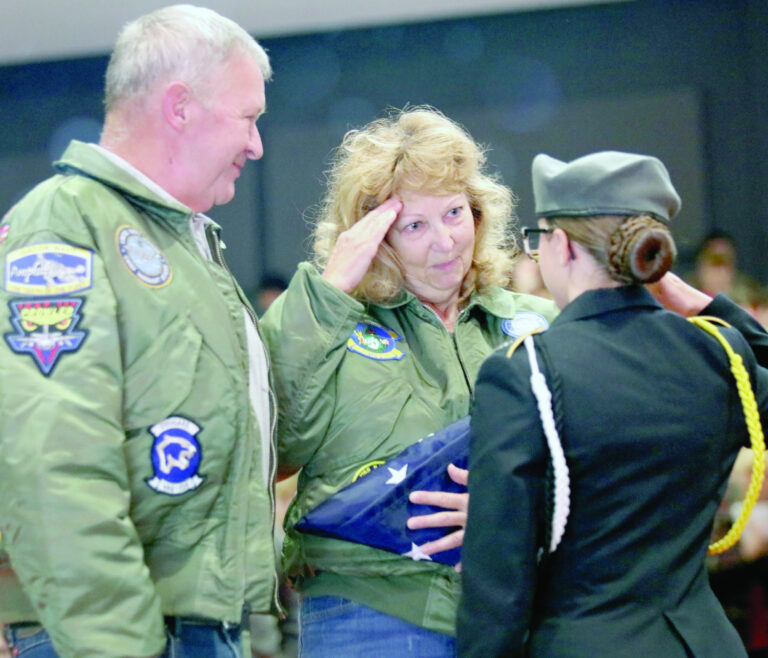City holds public hearings for 3 grants
Southwest Missouri Council of Governments assisting in fund procurement
BY KYLE TROUTMAN [email protected]
The city of Cassville held three consecutive public hearings on Jan. 14, led by representatives of the Southwest Missouri Council of Governments (SMCOG) and necessary to procure funding for three potential projects in the city.
The hearings followed a regularly scheduled city council meeting, and four members of the public were in attendance, including Phil Hutchens, Lynn Hilburn, Caleb Buntin and Derek Acheson, who also was present for the council meeting.
City staff and officials in attendance included: City Clerk Cherry Bailey; City Administrator Richard Asbill; City Council Members Jon Horner, Justin Gates, Taylor Weaver and Zane LeCompte; Mayor Bill Shiveley; Police Chief Donnie Privett, Public Works Director David Brock; Finance Officer Monzell Hagins; and Rachael Freeman, Element 79 director of marketing who handles the city’s economic development.
Leading the hearings were Kelsi Burton, SMCOG grants and environmental manager, and Garrett Colony, SMCOG grants administrator. SMCOG has written, administered several Community Development Block Grant-funded projects and is assisting the city in procuring CDBG funding from the Missouri Department of Economic Development. That department allocates the funding from the U.S. Department of Housing and Urban Development.
To qualify for CDBG funding, proposed projects must benefit all residents of an area where at least 51% of residents are considered low- and moderate-income (LMI) persons. The city of Cassville’s LMI, based on the Census’ 2016-2020 American Community Survey 5-year estimates, comes in at 56.4%.
The first hearing related to a proposed bridge project on 7th Street, replacing the structure destroyed by flooding in 2017 with a new 15-foot triple-span reinforced concrete box bridge. A new bridge would give the Cassville City Park a second access, as the only current access is on Highway 248.
The cost of the project is estimated at $739,742, well under the general infrastructure grant category limit of $2.5 million.
After describing the project and qualifying requirements, Burton opened the floor for public comment on the bridge.
Buntin said as a parent of children who participate in youth sports at the park, the bridge would help alleviate vehicle congestion during high-traffic times. Freeman agreed.
“During the season with so many kids running around, it’s unsafe with so many cars and congestion,” she said.
Hilburn, a Cassville resident who is also flood plain administrator for Stone County, said he was in favor of the bridge, as it would have little effect on water flow upstream in the case of a flood event.
“People thought I was against it, but I’m for it now,” he said. “I hope there is a path for kids to walk on.”
Acheson, who also serves as Cassville Volunteer Fire Protection District chief, added a second access point to the park would greatly assist first responders, especially in cases of emergency.
The second public hearing related to a 500kW wastewater treatment plant generator to ensure uninterrupted operations in the case of a power outage, such as the outage following the May 2024 windstorm that left the facility without power for three to four days. During that time, the plant relied on its current 75kW generator for critical operations, and it was forced to feed bacteria to treat sewage instead of normal operations.
The generator is estimated to cost $144,664, with the CDBG program providing the $100,000 limit in the critical facility generators grant category and the city providing the remaining $44,664.
Asbill said the 75kW generator will be moved to the lift station, allowing it to operate during a power outage without manual labor.
No significant public comments were made regarding the project.
The final hearing related to the proposed pedestrian bridge on 5th Street, adjacent to the Highway 112 bridge and linking the north bank of Flat Creek to the south bank and Cassville Greenway Trail.
The proposed structure is a 240-foot prefabricated bridge accompanied by 61 feet of 10-foot sidewalk to connect to the Greenway.
“This project addresses a critical need for improved pedestrian and cyclist safety by providing a dedicated crossing that separates foot and bicycle traffic from the adjacent vehicular bridge, which lacks adequate space for non-motorized users,” Burton said.
The project, falling into the general infrastructure grant category of the CDBG program, is estimated to cost $823,051, again well under the category’s funding limit of $2.5 million. The city is requesting $323,051 in CDBG funds, with the remaining $500,000 covered by a previously awarded Transportation Alternative Program grant via the Missouri Department of Transportation.
Hilburn noted the Highway 248 bridge is 6-8 inches above the 100-year flood estimations, and he wanted to be sure the pedestrian bridge was far enough away from the vehicular bridge that it would not cause a backup of water on 5th Street.
Brock said to get the project approved, the city had to get a no-rise certificate from the State Emergency Management Agency, which ensured such a backup would not occur. The proposal calls for the bridge to begin 10-15 feet east of the vehicular bridge, angling away from the structure as it crosses Flat Creek.
Buntin, who works at Able 2 on Highway 248 and uses the Highway 112 bridge often, said there are pedestrians on the vehicular bridge frequently.
“One person walking on that bridge will shut down a lane of traffic,” Privett added.
Acheson brought up the removal of a fire hydrant on the north side of the bridge, saying the next closest hydrant is 250 feet to the north. Brock said there is a plan within the city’s upcoming water lines project to address hydrant availability.
The meeting ended with a community needs assessment, for which all in attendance rated certain parts of city infrastructure and services as good, fair, poor or non-existent. Categories included public works infrastructure, public services, community facilities, housing, education profiles and economic development. After assessing the 42 total needs listed, participants were asked to pick a top five needs from the needs rated as poor.
In priority order, participants identified the top five needs as job creation, single- family housing, affordable rental housing, bridges, and parking. The assessment noted specifically that two of the three proposed CDBG projects relate to bridges, identified as a top five need, and would allow for improvements to be made in that area.





